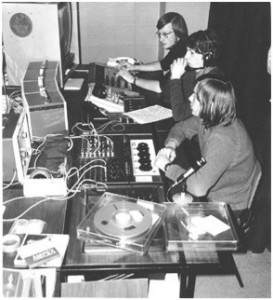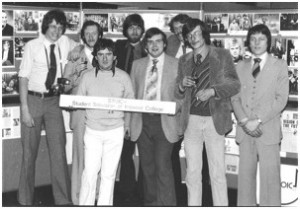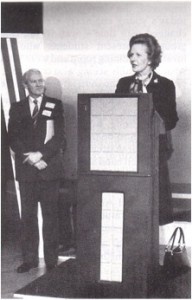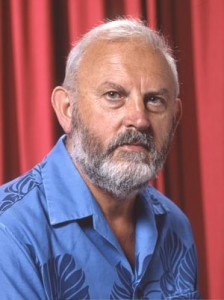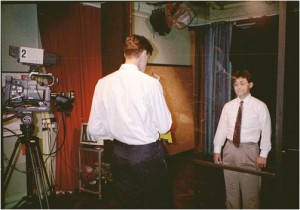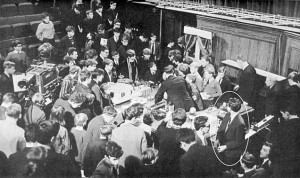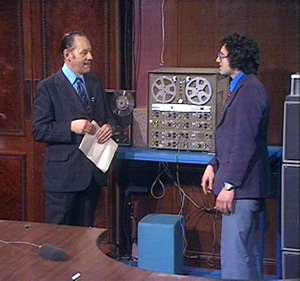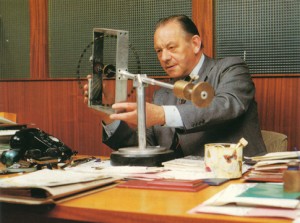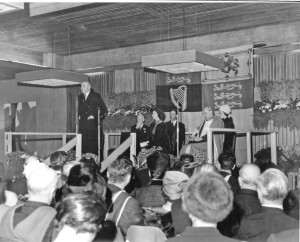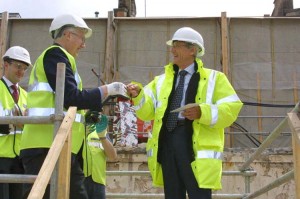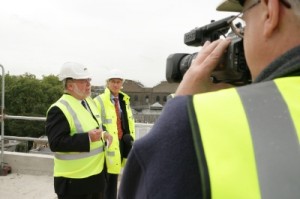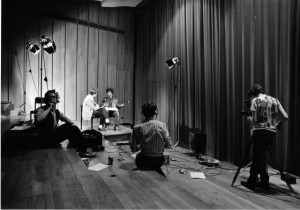
Last time, in STOIC One, we looked at the very start of STOIC with clips from things like: an early promotional video to join the club and Morphy Day on the tow path at Putney. Staying with that line of thought, this time we’re going to see an early example of coverage of a rag event, Election Results ‘live’ from the Great Hall and the days when students had a “Mooney” for lunch rather than an sandwich.
Firstly though, the idea for IC Radio started in 1974. In the days prior to the internet, to be able to hear radio, you needed a radio. For a radio to hear your broadcast you needed a transmitter (a legal one too). So, for IC Radio to operate it would need to be able to transmit.
By the time that IC Radio was about to open, there were ways to achieve this ‘within’ a building (as opposed to an actual transmitting aerial as such). As you will hear in the interview, a ‘leaky feeder’ cable was the method used to enable broadcasts on the medium wave. Mark Caldwell (a former STOIC Chairman) and main presenter at the time, interviewed John Allen who became IC Radio Station Manager. This video is from 4 March 1976 and has a few glitches in its playback, but it’s not bad for 35 years of age. John Allen has his own archive website with loads of old photos and sound clips, so you may wish to hop over and read more about it, click here.
Coverage of rag events was a regular and popular item within STOIC’s programme schedule. Whether it was: a simple collection; tiddlywinks down Oxford Street or, as we’re about to see, “Guilds Silly Sports” outside Harrods in Knightsbridge. This was always a good location for all involved, as it’s about 10 minutes from the South Ken campus. So, no one had to travel too far and this was important for STOIC when a rag took place on a Wednesday afternoon – the time in the week when STOIC’s news programme was recorded and edited. So, returning with the videotape to start editing was always the main thought for those waiting back in the studio. This is one of the earliest rags recorded back in 1979. Colin Palmer interviews those taking part and more importantly, those giving money…
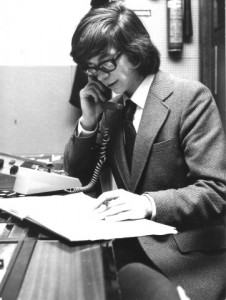
Hustings, elections and the UGM, (where the results were announced) were also high on the STOIC list of events to be covered each year. When, in the early 70’s, parts of the college were linked by both video and audio cables an idea came to mind. Why not try and link from the great hall and report the UGM live via STOIC? When the idea was first suggested the technology was not quite in place to allow video as well as sound to be relayed back to the TV studio.
So, in year one, Mark Caldwell presented live segments in sound only, with a photo of him showing in vision! Year two was a lot better and technology allowed a full linking in vision and sound. So, five years on from the first attempt, here’s a clip from the UGM of 1980 with Paul Johnson presenting.
But…this is just a bit different again. Why? Well, because by now STOIC was running its own live programme AND also linking into IC Radio at the same time. You’ll see what I mean in this clip and you’ll hear me on the earphone cue system which was clearly too loud that day! The slight pause before Dave Fuller starts speaking is because they were waiting for a cue from IC Radio to confirm the link-up between the two networks, all rather complicated for those early days.
Finally, if you were a student in the 1960’s to 1980’s you may well remember going for a “Mooney” at lunchtime. What was this? Well the answer is simple. Victor Mooney (Died on December 27th 2012 aged 89) was college Catering Manager from 1953 to his retirement in 1985. He became part of college tradition and so did his food, hence the reference “Mooney”. It’s a bit like saying you’re using a Hoover I guess. Over the years he came in for some serious complaining by the students, but, as he always said, if he was given a serious budget he could provide a serious meal. Here he is from 1979 talking to STOIC regular Dave Ghani.
Colin Grimshaw March 2010

